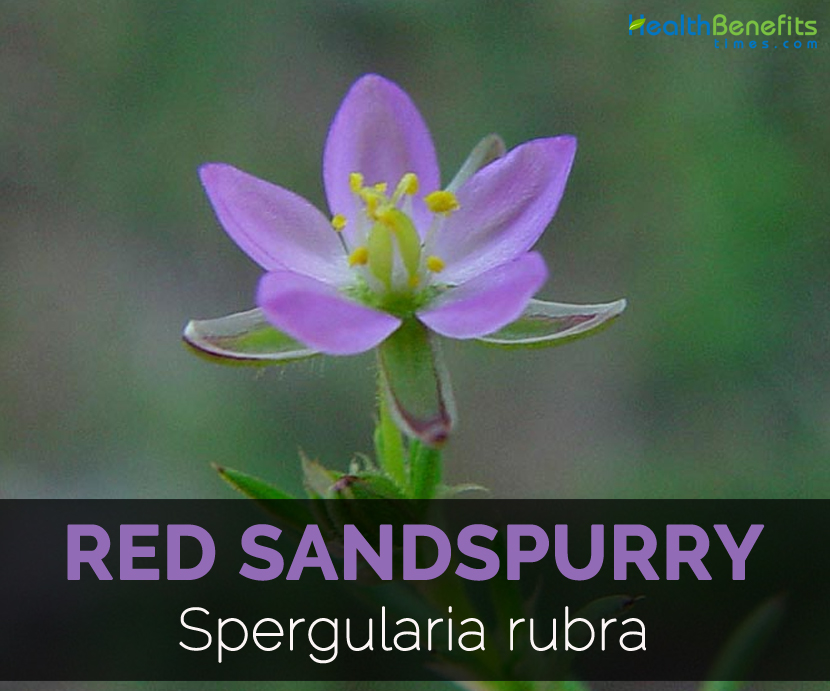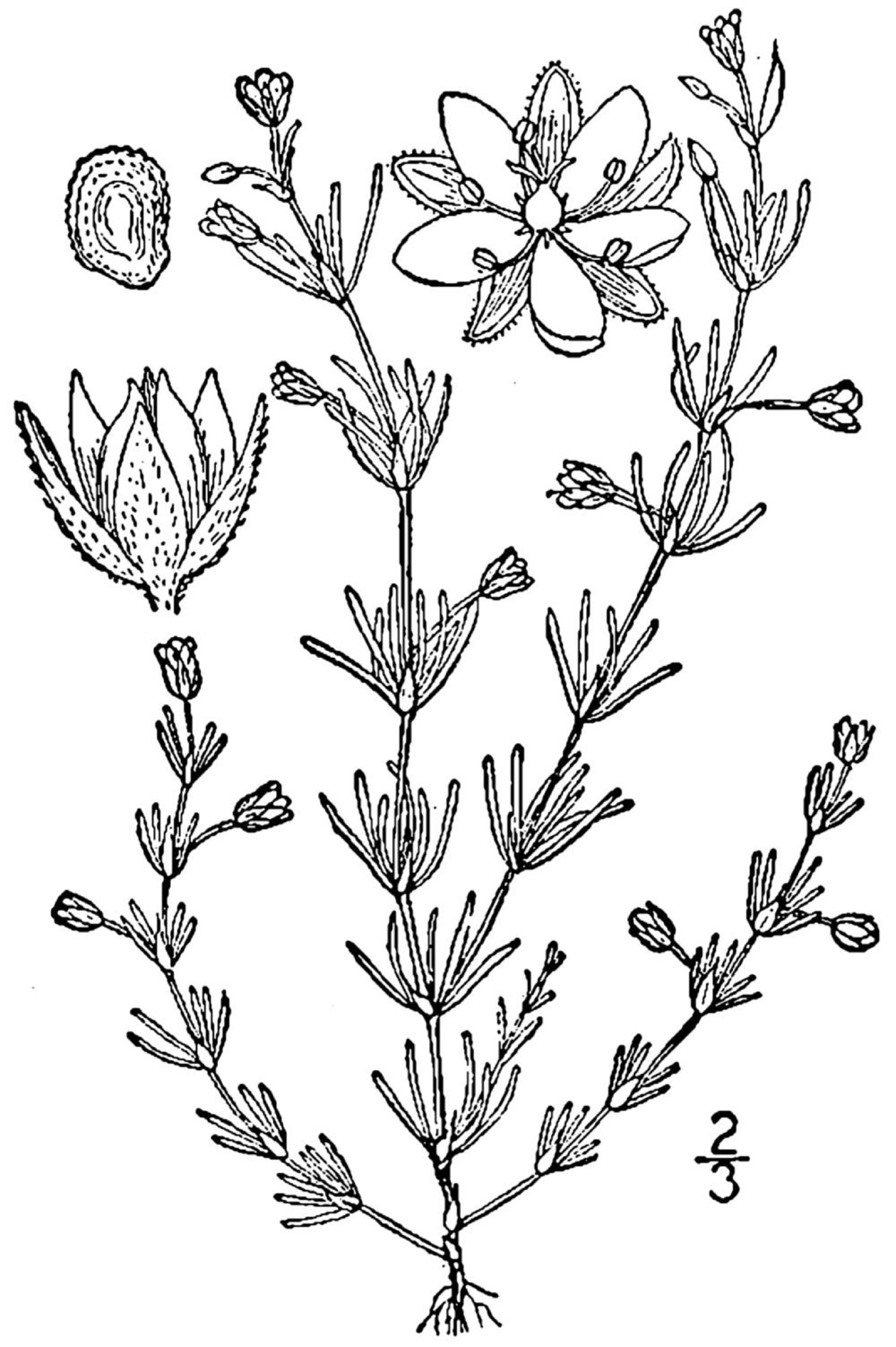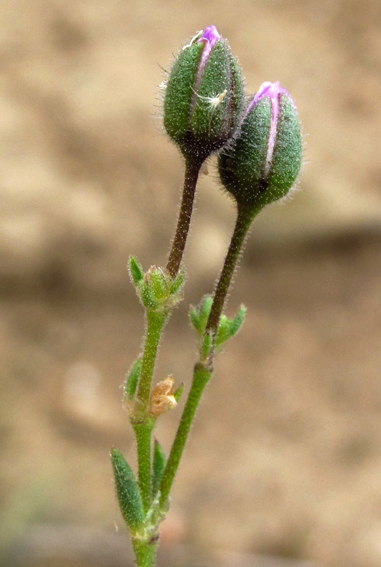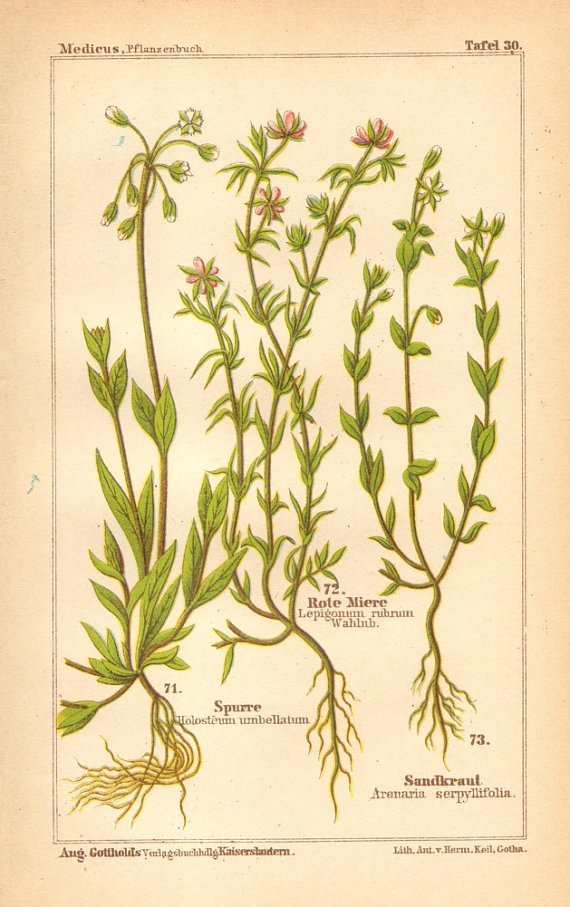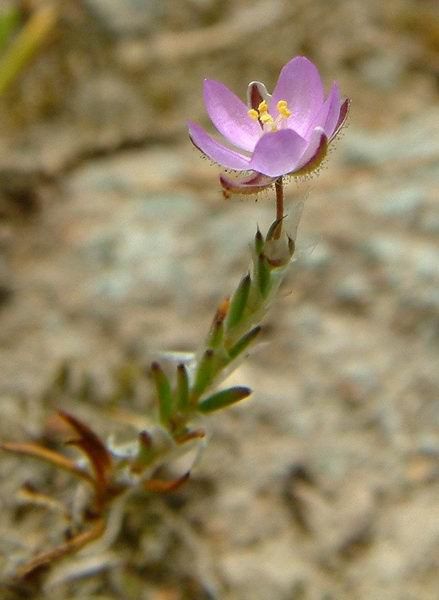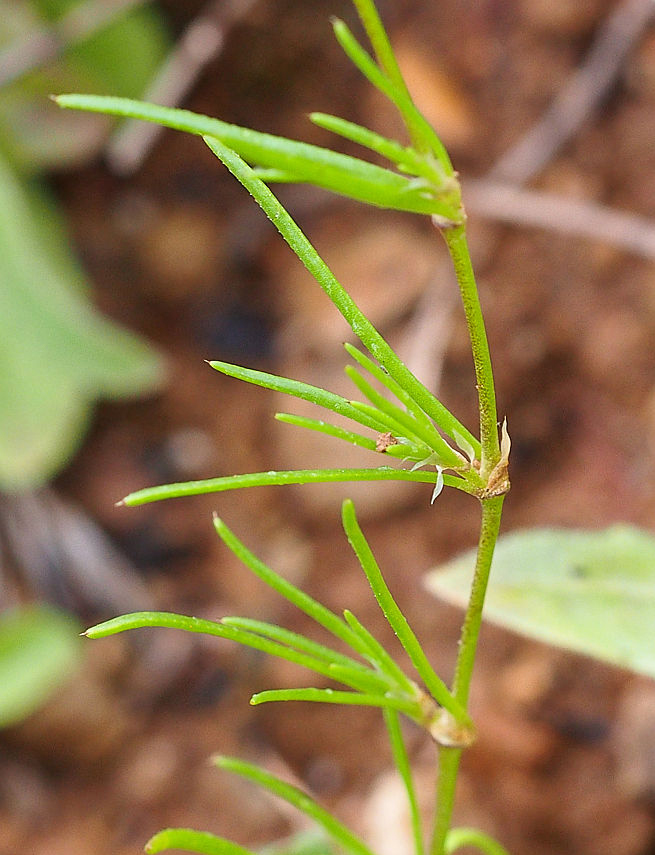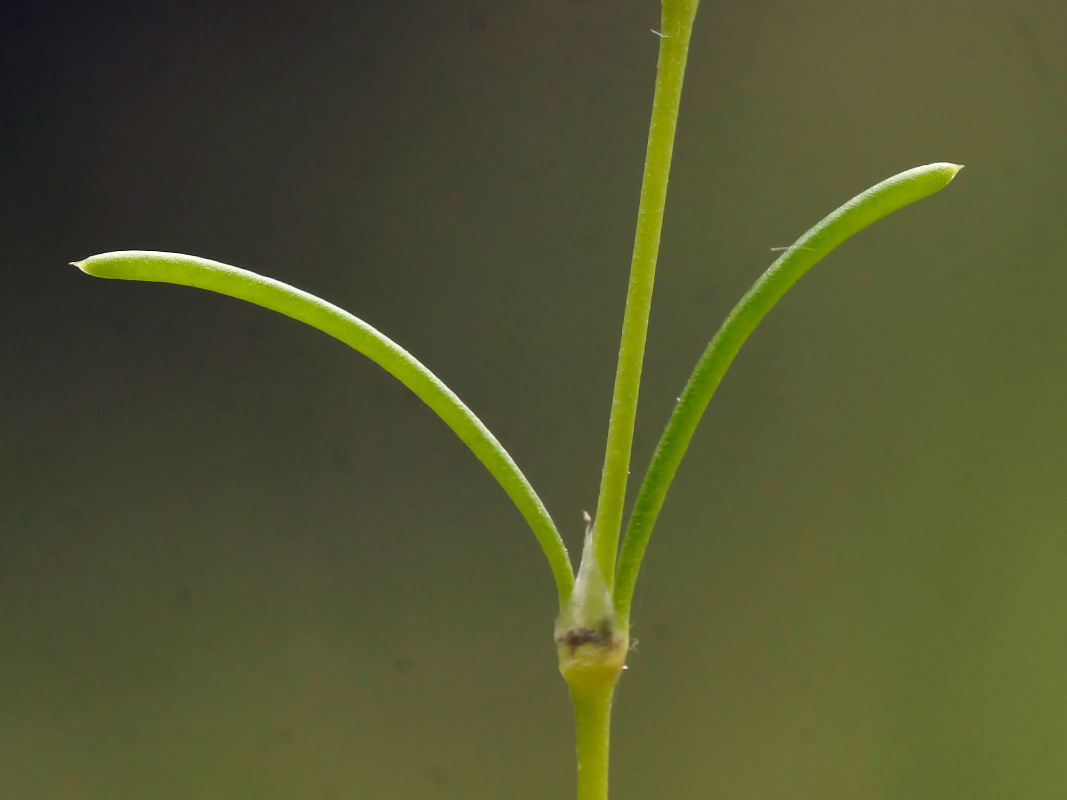The plant grows well in open forests, meadows, gardens and disturbed sites below 7500 feet. Likewise S. canadensis with fleshy leaves, it is entirely coastal and does not have axillary leaf clusters. The plant keeps the flowers closed in unpleasant weather. When the sun shines flower mass makes an attractive sight in the middle of sandy track. It could stand trampling and can form stands up to several square meters large against walls as well as busy fields. It is also able to thrive in the edge of sports fields, parking places and school yards.
Plant
Red sandspurry is an annual to short lived perennial plant having slender taproots. It has prostate to erect stems that are glandular to hairy, branched, 4 to 30 cm long and 0.3 to 0.5 mm in diameter. The plant bears linear, clustered, opposite, dark green, fleshy, glabrous or hairy leaves which measures 4 to 20 mm long and 1 mm wide having pointed tips. It has silvery and lanceolate stipules which is about 3.5 to 5 mm long and unites to enclose nodes. Flowers have five petals, five sepals and six to ten stamens. It is arranged singly or in small clusters in the leaf axils. Petals are obovate to ovate, pink to pale red and measures 2 to 3.5 mm long. Sepals are glandular to hairy and are fused at a base for 0.5 to 0.7 mm. The capsules are three valved, green to tan and is about 3.5 to 5 mm long. Seeds measure 0.4 to 0.6 mm long having net like veins.
Traditional uses
- It is helpful for urinary tract conditions, such as cystitis, urinary calculus and dysuria.
- An infusion helps to soothe muscle walls of urinary tubules and is also used for treating kidney stones, chronic cystitis, acute and catarrh of bladder.
Precautions
- Consult the doctor before using it to treat health conditions.
- Allergic people should avoid its use.
References:
http://www.pfaf.org/user/Plant.aspx?LatinName=Spergularia+rubra
https://www.botanical.com/botanical/mgmh/s/sancom13.html
https://plants.usda.gov/core/profile?symbol=SPRU
http://accs.uaa.alaska.edu/files/invasive-species/Spergularia_rubra_BIO_SPRU.pdf
https://www.inaturalist.org/taxa/55730-Spergularia-rubra
Comments
| Red Sandspurry Quick Facts | |
|---|---|
| Name: | Red Sandspurry |
| Scientific Name: | Spergularia rubra |
| Origin | Native to Europe and Asia and could be found in other continents such as North and South America and Australia. |
| Colors | Green |
| Shapes | Egg-shaped, 3-valved, 4 to 5 mm long capsule |
| Name | Red Sandspurry |
|---|---|
| Scientific Name | Spergularia rubra |
| Native | Native to Europe and Asia and could be found in other continents such as North and South America and Australia. |
| Common/English Name | Common Sandspurry, Sandwor, Sabline Rouge, Red sand spurrey, red sandspurry |
| Name in Other Languages | Danish: Mark-hindeknæ; German: Rote Schuppenmiere; Finnish: Punasolmukki; Swedish: Punasolmukki, Rödnarv; English: Purple-sandwort, Red sand-spurrey, Red sandspurry, Sand spurrey, Sand-spurrey; Chinese: wu chi ni qi gu; Dutch: Rode schijnspurrie; French: Spergulaire rouge; German: Rote Schuppenmiere |
| Plant Growth Habit | Annual to perennial |
| Root | Slender taproot |
| Leaves | Dark green, glabrous or hairy, linear, 4 to 20 mm long, 1 mm or less wide |
| Flowering Season | Mid spring |
| Flower | Pink to pale red |
| Fruit shape & size | Egg-shaped, 3-valved, 4 to 5 mm long capsule |
| Fruit color | Green |
| Plant parts used | Herb |
| Seed | 0.4 to 0.6 mm long, brown |


